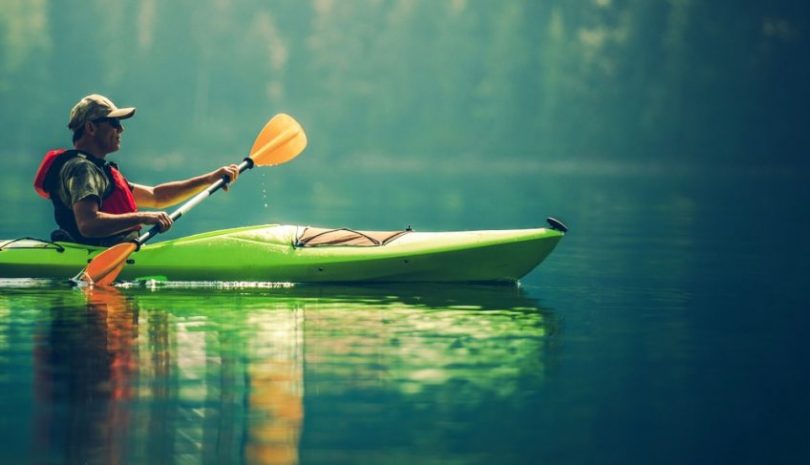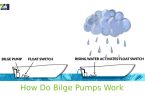Kayaking is a fun leisure activity enjoyed by many people across the globe. It’s also an experience in which we can share with our friends and family, or it can also be an individual activity.
However, like every outdoor activity, there are a lot of things to know, such as what outfit you need to wear and how to dress accordingly, how to maintain safety, and some general tips.
Things to Wear While Kayaking
Know the Conditions
Oceans and Lakes
There are two types of conditions that a new kayaker needs to know, and that is oceans and lakes, so let’s start with oceans;
- Usually, the kayaking conditions in the ocean are much different to that of lakes due to the fact that that sea can be quite an unpredictable place depending on the condition of the weather. It is recommended that experienced kayakers indulge in this form of kayaking, due to the high chance of flipping your kayak.
- Lakes would be the best choice for beginners, and the conditions are more predictable than that of the ocean and are generally safer. Usually, this is a better option of recreational kayaking, and it gives beginners a good environment practicing with their kayak.
Whitewater Rapids
When kayaking in dangerous conditions, it is important to have knowledge about these conditions, as this could mean the difference in drowning and surviving. Which brings us to whitewater rapids.
- This is a situation in which “whitewater” is formed. This takes place when there is an increase in gradient, because of this, water starts to flow a lot of faster, thus generating turbulence, because of this we start to see these bubbles in the water, and this is how it has come to be known as “whitewater”.
- In this condition, safety is imperative due to the sheer force at which the water is traveling, it next to impossible to swim against this sort of current, so the proper attire and gear are mandatory.
Calm Rivers and Shallow Bays
- These types of conditions are perfect for recreational kayaking, it’s also a great condition for learning the art of kayaking. Calm rivers, generally don’t have any sort of rapid, if they do, they are so insignificant that they don’t pose any danger whatsoever.
- Shallow bays are also a good option due to the fact that they have no flowing water, for young children wanting to get into this hobby, this would be the ideal location for in terms of safety.
Know the Temperature
This could be a sort of kayak clothing guide and kayaking clothes indicator, as clothing is an integral part of what kayaking is due to the fact that clothing protects us from the natural elements, and these types of clothing are different depending on the temperature of the water and the weather.
Warm Conditions
Let’s start off with the warm conditions, typically you will setup when the water and air temperature is at a level where you do not need to worry about hyperthermia. The range of clothing needed consists of a personal floating device or PFD, swim shorts or swimming trunks, and a rash vest. It’s also advisable to pack in a rain jacket in the case of a sudden weather change.
Using a wetsuit is also a very valid option. They come in a variety of different variations and thicknesses, and all you need to do is just choose one that suits you. Most people also like to use water shoes to protect their feet in case they go into the water. There is always the risk of foreign objects in the water. A hat, sunscreen, and polarized sunglasses are also a big benefit if you don’t want to look like a tomato the following day, and the sun can be quite harsh on your eyes if you don’t protect them properly.
Cold Conditions
Unlike the warm temperature setup, the air and water a much colder thus there is a higher risk of hyperthermia, so it is advisable to have more layers to take the extra precaution. Let’s start with the clothing. There are a few similarities, but very obvious differences. Due to the colder conditions, this setup should consist of long underwear, a dry suit liner, and much thicker fleece in order to protect you from the lower temperature.
A personal floating device should always be of top priority as this could mean the difference between you surviving and drowning waterproof shoes and socks should also be a part of this setup, especially for colder conditions. One could also add gloves as well for added protection
Wetsuit Vs Dry suit For Kayaking
Choosing to wear and wetsuit or dry suit is dependent on the outside conditions and temperature, but first let’s go into more about what both of these are;
- Let’s talk about the wetsuit: The wetsuit is a skin tight suit that fits closely to your body, it’s used for generally cold waters, but its work as form an insulator from your own body heat. The suit allows a tiny bit of water into the fabric, your body heats the small amount of water in that fabric to insulate you and keep you warm.
- Now for the dry suit: As the name suggests, a dry purpose is to keep you dry but there is a major difference between both of these suits. For starters, the wetsuit is tight and fits close up against your skin whereas the dry suit is very loose on the body, and there an elastic around the ankles wrist and neck to stop any water from entering inside and causing hyperthermia. This suit is suited for extremely cold conditions where the chance of hyperthermia is almost certain.
Do I Need A Life Jacket?
Yes! It is important for all kayakers to use a life jacket or PFD no matter what types of kayak they are using. The simple answer is that this can save your life. Unfortunately there are a large proportion of people that don’t feel the need to wear them as they think they it is unnecessary due to the fact that they can already swim, but this is not always the case, especially if you are white water rafting where if a situation where you do fall off the boat, it will be next to impossible to swim against the current of the rapids and you are likely to tire out and drown if you are not careful.
Did you know that a study was done on this topic? After reviewing the results, it showed that 70% of all boating fatalities were because of drowning and that it could have all been avoided if people just wore their life jackets. We strongly recommend you to carry a life jacket while you are on any non-inflatable or inflatable boats and kayaks.
Clothing to Avoid When Kayaking
These are some of the clothes to avoid as they could potentially cause you a big risk.
Don’t wear any clothing that is made of cotton, and this is due to the fact that it is very prone to absorbing water thus it takes a long time for your clothes to dry, which will make you feel cold for a longer amount of. Did you know that cotton absorbs 27 times its own weight, which will, in turn, make your clothes feel very heavy, and if you don’t wear a life jacket and you’re in the water, this could cause you to drown?
Kayaking is an exciting and fun experience to do with family or friends, It’s also a great workout if you do it often enough, it’s a great leisure activity, that in its own right, deserves to be promoted more often than not and we hope you give it a try and go kayaking.








Leave a Comment